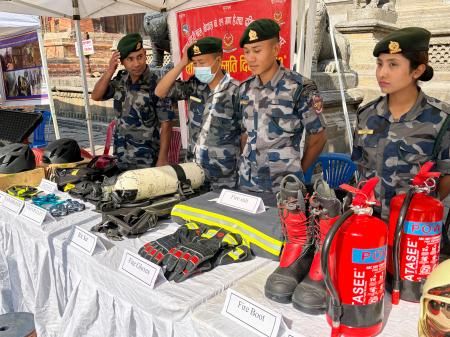Nepal's Earthquake: A Wake-Up Call for Disaster Preparedness
Nepal's tragic history with earthquakes, most notably the devastating 2015 Gorkha earthquake, underscores the critical need for robust disaster preparedness. This isn't just about reacting to tremors; it's about building resilient communities capable of withstanding and recovering from such catastrophic events. This article examines the challenges and crucial steps Nepal needs to take to enhance its earthquake preparedness strategies.
Understanding the Risks: Nepal's Seismic Vulnerability
Nepal sits in one of the world's most seismically active zones, nestled between the Indian and Eurasian tectonic plates. This geographical reality makes strong earthquakes an inevitable, recurring threat. The 2015 earthquake, measuring 7.8 on the Richter scale, caused widespread devastation, highlighting the vulnerability of existing infrastructure and the limitations of existing emergency response mechanisms. The sheer loss of life and the long-term impact on the nation's economy and social fabric serve as a stark reminder of the urgent need for improvement.
Key Challenges in Disaster Preparedness:
- Infrastructure Deficiencies: Many buildings, particularly in rural areas, lack earthquake-resistant designs. This makes them highly susceptible to collapse during seismic activity.
- Lack of Public Awareness: Insufficient public education and awareness about earthquake preparedness significantly hinders effective response strategies. Many people are unaware of basic safety measures.
- Limited Resources: Nepal often faces resource constraints, impacting its ability to invest in early warning systems, disaster-resistant infrastructure, and comprehensive training programs for first responders.
- Geographical Challenges: The mountainous terrain poses logistical hurdles in providing timely aid and evacuation in affected areas. Access to remote communities can be severely hampered after an earthquake.
- Coordination Issues: Effective disaster response relies on strong inter-agency coordination. Improving communication and collaboration between government agencies, NGOs, and community groups is crucial.
Strengthening Nepal's Earthquake Preparedness: A Multi-pronged Approach
Addressing Nepal's earthquake preparedness challenges requires a multifaceted strategy:
1. Building Earthquake-Resistant Infrastructure:
- Stricter Building Codes: Enforcing and updating building codes to ensure earthquake-resistant construction practices are crucial, especially for critical infrastructure like hospitals and schools.
- Retrofitting Existing Structures: Implementing programs to retrofit existing buildings, particularly older structures, to enhance their resilience against earthquakes.
- Investment in Infrastructure: Increased government investment in infrastructure development, prioritizing earthquake-resistant design and construction.
2. Enhancing Early Warning Systems:
- Seismic Monitoring Network: Expanding and improving Nepal's seismic monitoring network to provide timely earthquake warnings.
- Public Alert Systems: Developing and implementing effective public alert systems to warn citizens about impending earthquakes. This includes utilizing mobile technology and public broadcasting systems.
3. Community-Based Disaster Preparedness:
- Public Awareness Campaigns: Launching extensive public awareness campaigns to educate the population about earthquake preparedness, including safety measures, evacuation plans, and first aid.
- Community-Based Disaster Response Teams: Training and empowering community-based disaster response teams to provide immediate assistance in affected areas.
- Disaster Drills and Simulations: Conducting regular disaster drills and simulations to prepare communities for earthquake scenarios.
4. Strengthening Emergency Response Capabilities:
- Improved Emergency Response Coordination: Enhancing communication and coordination between various government agencies and NGOs involved in disaster response.
- Training for First Responders: Providing specialized training for first responders, including search and rescue teams, medical personnel, and disaster management officials.
- Stockpiling of Relief Supplies: Establishing sufficient stockpiles of essential relief supplies, including food, water, medicine, and shelter materials.
Conclusion: A Path Towards Resilience
Nepal's vulnerability to earthquakes necessitates a proactive and comprehensive approach to disaster preparedness. By investing in earthquake-resistant infrastructure, enhancing early warning systems, strengthening community resilience, and improving emergency response capabilities, Nepal can significantly reduce the devastating impact of future earthquakes. This requires sustained commitment from the government, international organizations, and the Nepali people themselves, working collaboratively to build a safer and more resilient future. Further research and ongoing collaboration are crucial to effectively adapt to the ever-present seismic risks facing the nation. This ongoing effort is not merely about survival; it's about building a future where communities can thrive, even in the face of nature's most powerful forces.
